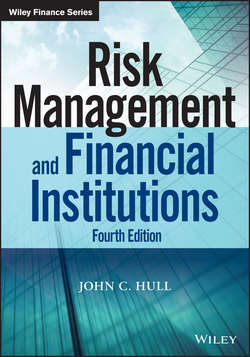Читать книгу Risk Management and Financial Institutions - Hull John C. - Страница 38
На сайте Литреса книга снята с продажи.
PART One
Financial Institutions and Their Trading
CHAPTER 3
Insurance Companies and Pension Plans
3.7 MORAL HAZARD AND ADVERSE SELECTION
ОглавлениеWe now consider two key risks facing insurance companies: moral hazard and adverse selection.
Moral Hazard
Moral hazard is the risk that the existence of insurance will cause the policyholder to behave differently than he or she would without the insurance. This different behavior increases the risks and the expected payouts of the insurance company. Three examples of moral hazard are:
1. A car owner buys insurance to protect against the car being stolen. As a result of the insurance, he or she becomes less likely to lock the car.
2. An individual purchases health insurance. As a result of the existence of the policy, more health care is demanded than previously.
3. As a result of a government-sponsored deposit insurance plan, a bank takes more risks because it knows that it is less likely to lose depositors because of this strategy. (This was discussed in Section 2.3)
Moral hazard is not a big problem in life insurance. Insurance companies have traditionally dealt with moral hazard in property-casualty and health insurance in a number of ways. Typically there is a deductible. This means that the policyholder is responsible for bearing the first part of any loss. Sometimes there is a co-insurance provision in a policy. The insurance company then pays a predetermined percentage (less than 100 %) of losses in excess of the deductible. In addition there is nearly always a policy limit (i.e., an upper limit to the payout). The effect of these provisions is to align the interests of the policyholder more closely with those of the insurance company.
Adverse Selection
Adverse selection is the phrase used to describe the problems an insurance company has when it cannot distinguish between good and bad risks. It offers the same price to everyone and inadvertently attracts more of the bad risks. If an insurance company is not able to distinguish good drivers from bad drivers and offers the same auto insurance premium to both, it is likely to attract more bad drivers. If it is not able to distinguish healthy from unhealthy people and offers the same life insurance premiums to both, it is likely to attract more unhealthy people.
To lessen the impact of adverse selection, an insurance company tries to find out as much as possible about the policyholder before committing itself. Before offering life insurance, it often requires the policyholder to undergo a physical examination by an approved doctor. Before offering auto insurance to an individual, it will try to obtain as much information as possible about the individual's driving record. In the case of auto insurance, it will continue to collect information on the driver's risk (number of accidents, number of speeding tickets, etc.) and make year-to-year changes to the premium to reflect this.
Adverse selection can never be completely overcome. It is interesting that, in spite of the physical examinations that are required, individuals buying life insurance tend to die earlier than mortality tables would suggest. But individuals who purchase annuities tend to live longer than mortality tables would suggest.
